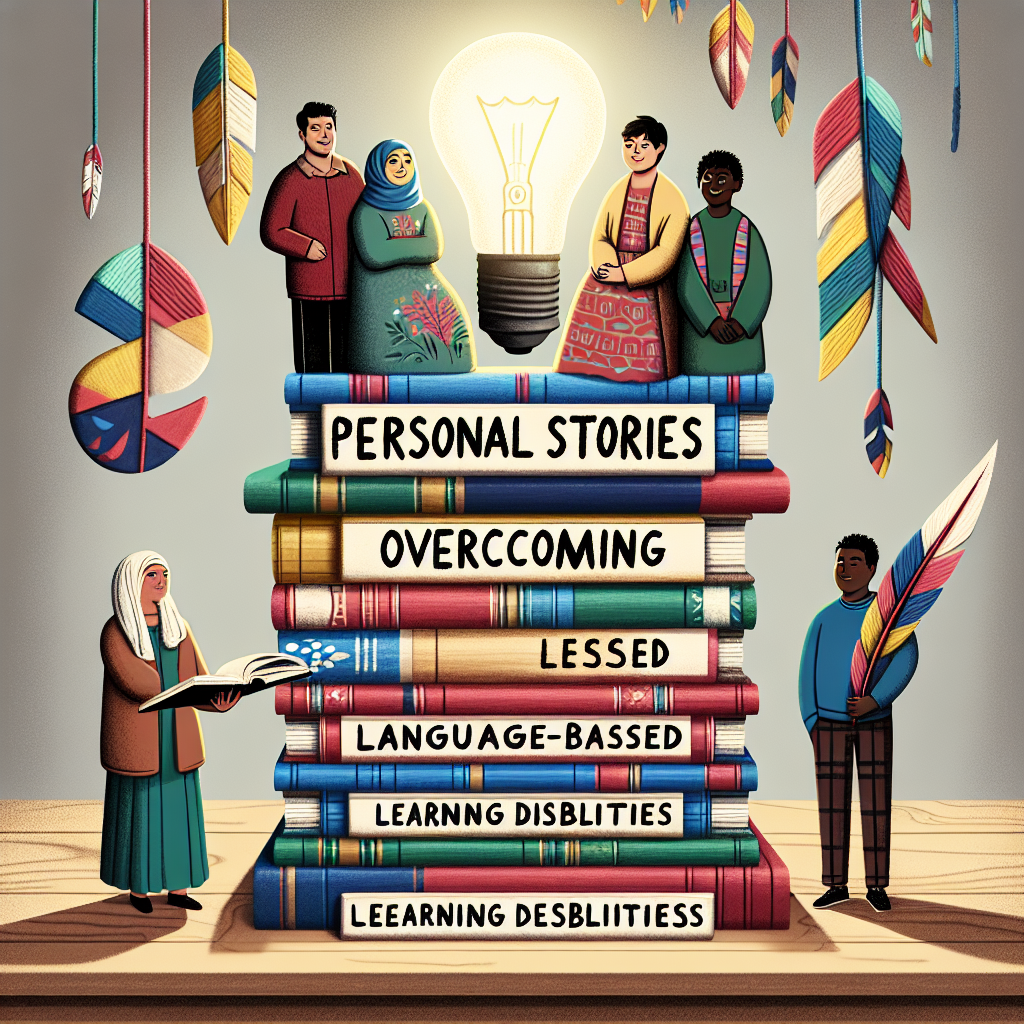Personal Stories: Overcoming Language-Based Learning Disabilities – The Ultimate Guide to Triumph in Communication
Introduction
Imagine being a child who loves stories but struggles to read them aloud. You yearn to share your thoughts but find that words betray you at every turn. This is the reality for many individuals with language-based learning disabilities (LBLD) who face daily challenges that often lead to frustration and self-doubt. Yet, tucked within these challenges are personal stories: overcoming language-based learning disabilities—stories of resilience, growth, and eventual triumph.
In this in-depth article, we will explore these personal journeys that inspire and educate, along with strategies and insights for those who face similar obstacles. Whether you’re a parent, educator, or someone navigating learning disabilities, these narratives will shed light on the path to success.
Understanding Language-Based Learning Disabilities
Before diving into personal stories, it’s essential to understand what language-based learning disabilities entail. LBLDs can affect reading, writing, and sometimes oral communication. They often manifest as dyslexia, dysgraphia, or even auditory processing disorders.
Key Characteristics of LBLDs
- Dyslexia: Difficulty in reading despite having adequate intelligence.
- Dysgraphia: Challenges in writing coherently, affecting spelling and handwriting.
- Auditory Processing Disorder: Issues in processing spoken language.
Statistics at a Glance
| Type of LBLD | Percentage of Affected Individuals |
|---|---|
| Dyslexia | 5-10% |
| Dysgraphia | 5-20% |
| Auditory Processing | 5-10% |
These statistics highlight the prevalence of language-based learning disabilities—it’s important to remember that you are not alone on this journey.
Personal Stories: Overcoming Language-Based Learning Disabilities
Case Study 1: Emily’s Journey Through Dyslexia
Emily was diagnosed with dyslexia at age 8. Her love of stories became overshadowed by her struggles with reading. She often felt isolated in her classroom. However, an instrumental teacher introduced her to audiobooks.
Analysis: Emily’s situation illustrates how tailored educational strategies can transform challenges into opportunities. Audiobooks allowed her to engage with stories without the stress of traditional reading, building her confidence.
Case Study 2: Marco and Dysgraphia
Marco always found writing to be a monumental task. The more he tried to express his ideas, the more his handwriting faltered. After years of struggle, an occupational therapist helped him develop tools to articulate his thoughts verbally before writing them down.
Analysis: Marco’s story shows that seeking professional help can lead to innovative strategies that bypass traditional barriers. His success underscores the importance of adapting to individual needs.
Case Study 3: Sarah and Auditory Processing Disorder
Sarah was often misunderstood in classroom discussions. She struggled to follow instructions and felt judged by her peers. With the help of a speech therapist, she learned listening strategies that allowed her to summarize information more effectively.
Analysis: Sarah’s journey emphasizes the importance of open communication between educators and students. Adaptive classroom strategies can make a significant impact on learning success.
Strategies for Overcoming Language-Based Learning Disabilities
It’s not enough to share personal stories; we must also explore actionable strategies that have yielded success for individuals with LBLDs.
1. Use of Technology
Assistive technology like text-to-speech software can help bridge gaps in learning. Programs such as Grammarly or Google Read & Write can also aid in writing tasks.
2. Multi-Sensory Learning Approaches
Adopting multi-sensory techniques can enhance comprehension. Using visual aids, tactile learning, and auditory materials helps engage different learning styles.
3. Collaborative Learning Environments
Creating a supportive classroom environment where students feel safe to express their struggles leads to peer-to-peer learning. Group activities can foster collaboration and shared learning experiences.
4. Seeking Professional Help
Don’t hesitate to consult psychologists, occupational therapists, or specialized educators. Professional guidance can provide insights tailored to individual learning styles.
Real-Life Applications and Impact
The personal stories of overcoming language-based learning disabilities resonate deeply with many. They motivate others and offer insights into different approaches. The impact of sharing these journeys extends beyond individual experiences; it creates a community of support and understanding.
The Role of Support Systems
Family, friends, and educators play a pivotal role in fostering resilience. Positive reinforcement and encouragement can uplift those facing challenges, making a world of difference.
Community Resources
Numerous organizations exist to support individuals with language-based learning disabilities. Groups like the International Dyslexia Association and local advocacy groups offer resources and communities to nurture growth.
Conclusion: Champions of Their Own Stories
As we reflect on these personal stories of overcoming language-based learning disabilities, we see that the challenges faced can lead to remarkable resilience. Each journey, like Emily’s, Marco’s, and Sarah’s, showcases the strength and adaptability necessary to thrive despite obstacles.
Let their stories inspire you—whether you’re on this journey yourself, or supporting someone who is. Embrace the power of learning, advocate for the necessary support, and cultivate environments that champion each individual’s unique voice.
FAQs
1. What is a language-based learning disability?
Language-based learning disabilities, such as dyslexia, dysgraphia, and auditory processing disorder, affect reading, writing, and communication skills.
2. How are language-based learning disabilities diagnosed?
Diagnosis typically involves assessments by educational psychologists or specialists who evaluate reading, writing, and oral language capabilities.
3. Can children with LBLDs achieve academic success?
Absolutely! With tailored strategies, support, and a suitable learning environment, children with LBLDs can excel academically.
4. What role does technology play in overcoming LBLDs?
Assistive technology can provide tools that enhance learning experiences, such as speech-to-text software and interactive educational apps.
5. How can parents support children with LBLDs at home?
Encouraging reading through audiobooks, creating a structured learning environment, and maintaining open communication can help.
6. Are there specific teaching methods recommended for LBLDs?
Yes! Multi-sensory approaches that incorporate visual, auditory, and kinesthetic techniques can significantly benefit students with LBLDs.
This exploration of Personal Stories: Overcoming Language-Based Learning Disabilities aims to empower readers, offering them the insights and support necessary to navigate challenges and emerge victorious. Each story shared here holds the potential to inspire those in similar situations to persevere and succeed.

